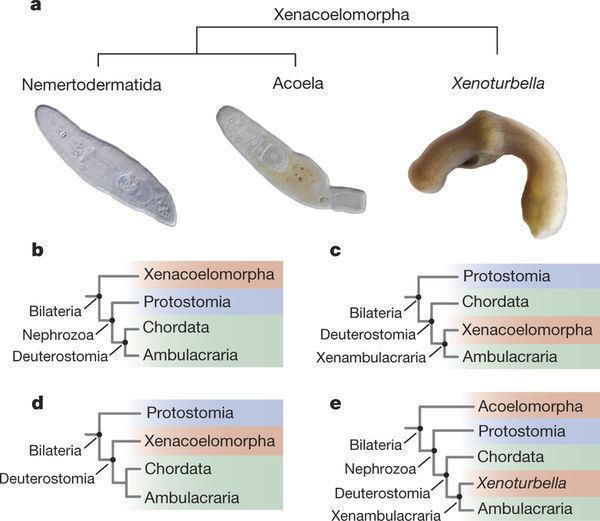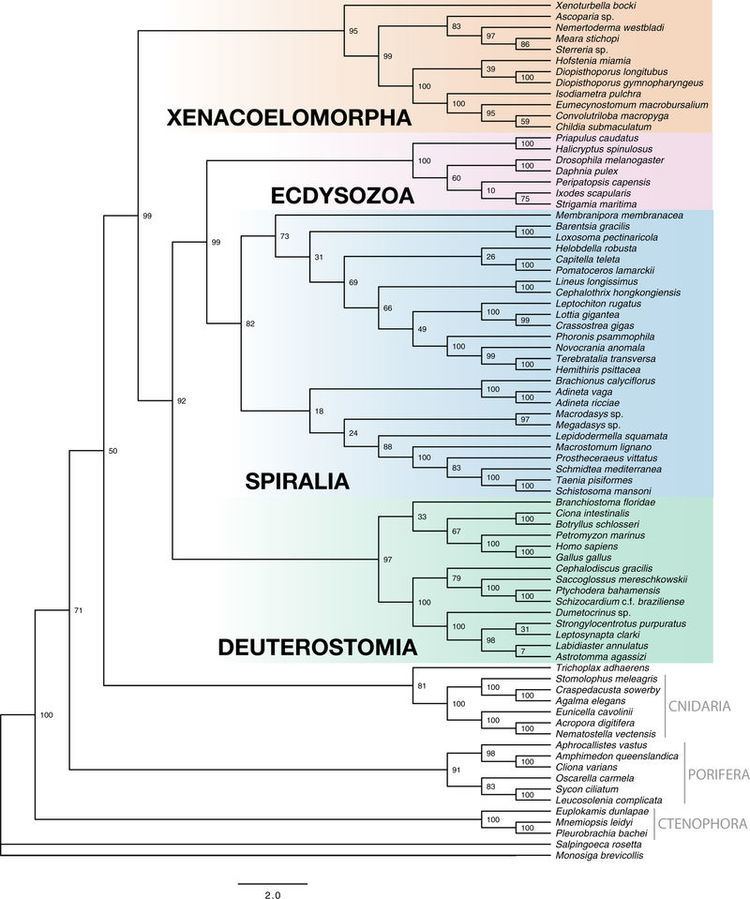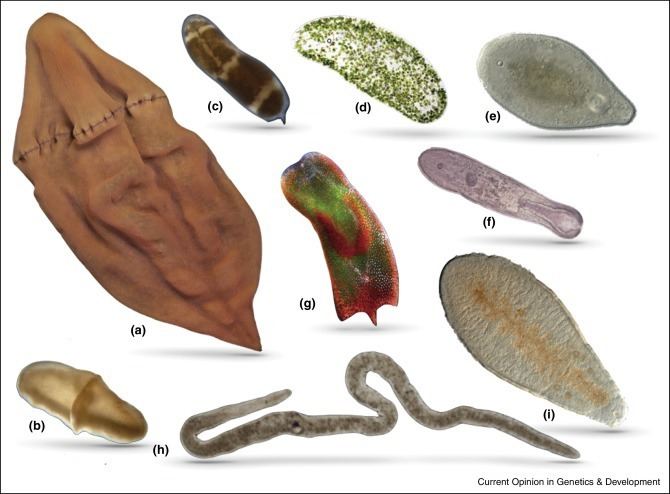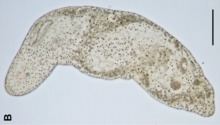Rank Phylum | ||
 | ||
Similar | ||
Xenacoelomorpha is a basal bilaterian clade of small and very simple animals, grouping the xenoturbellids with the acoelomorphs. It was suggested by morphological synapomorphies, and confirmed by phylogenomic analyses of molecular data. Xenacoelomorphs emerged with the Nephrozoa as sister clade.
Contents

Phylogeny

The clade Xenacoelomorpha, grouping Acoelomorpha and the genus Xenoturbella, was revealed by molecular studies. Initially it was considered to be a member of the deuterostomes, but a more recent transcriptome analysis concluded that it is the sister group to the Nephrozoa, which includes the protostomes and the deuterostomes, being therefore the basalmost bilaterian clade.
Characteristics

All xenacoelomorphs lack a typical stomatogastric system, i.e., they do not have a true gut. In acoels, the mouth opens directly into a large endodermal syncytium, while in nemertodermatids and xenoturbellids there is a sack-like gut lined by unciliated cells.

The nervous system is basiepidermal, i.e., located right under the epidermis, and a brain is absent. In xenoturbellids it is constituted by a simple nerve net without any special concentration of neurons, while in acoelomorphs it is arranged in a series of longitudinal bundles united in the anterior region by a ring comissure of variable complexity.
The sensory organs include a statocyst and, in some groups, two unicellular ocelli.
The epidermis of all xenacoelomorphans is ciliated. The cilia are composed by a set of 9 pairs of peripheral microtubules and one or two central microtubules (patterns 9+1 and 9+2, respectively). The pairs 4–7 terminate before the tip, creating a structure called a "shelf".
